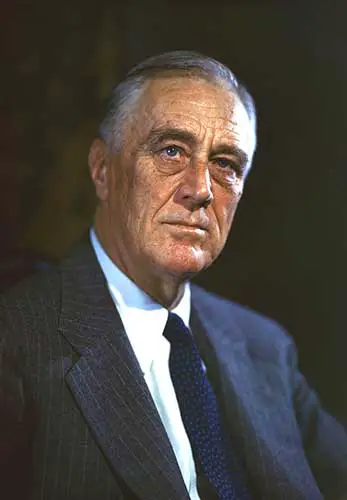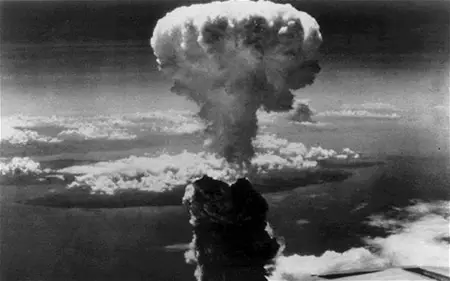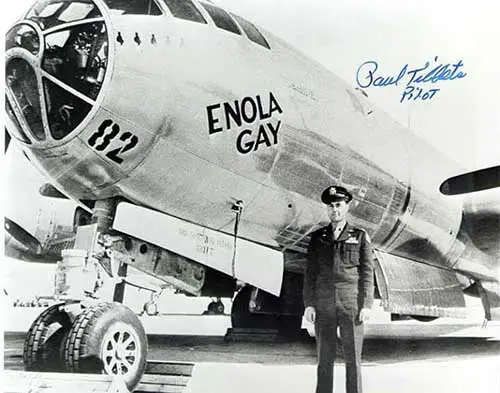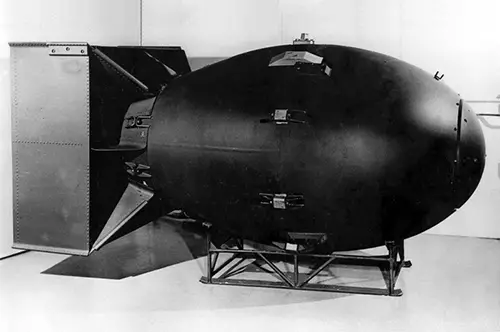Hiroshima and Nagasaki
Atomic Bomb
Background
Before the war, many scientists had been investigating the possibility of generating energy and even weapons from the atom, the building block of the universe and everything that surrounds us.
The famous scientist Albert Einstein represented these leading thinkers by writing to the American president Franklin Roosevelt in August 1939.

He told him about their ideas and the danger of the Nazis in Germany developing such a bomb for military use.
Roosevelt responded by setting up a group of experts to develop the idea in the United States.
The idea only really got going after the Japanese bombed the American Naval Base at Pearl Harbour in December 1941.
Other countries also saw the appeal in having a very powerful weapon that would prevent their soldiers being killed in large numbers, as well as being able to stop enemies from making possible attacks on them.
These countries included Germany, Japan, the United Kingdom and the Soviet Union. However, none of them were able to make the bomb before the Americans.
Between 1941 and 1945, the scientist, Robert Oppenheimer, led a group of experts on the Manhattan Project with the aim of making the world’s first atomic bomb.

Many of the people on Oppenheimer’s team were scientists who had escaped Nazi Germany.
They all worked at a special research site at Oak Ridge, Tennessee.
The decision to use the bomb
Throughout the war, Allied forces heavily bombed Japan killing hundreds of thousands of people. But the Japanese survived these attacks and were still very strong.
They refused to surrender and so President Harry Truman thought about a possible invasion of the country.
The Japanese army was huge and the President knew that he would lose hundreds of thousands of men, if he embarked on such a plan.
So, in July 1945, Truman offered the Japanese the chance to surrender.
He knew that the bomb had now been completed and effectively tested in the New Mexico desert and was ready for use.
The Japanese wanted to negotiate the conditions of surrender and refused to give in to the demands of the Allies.


Hiroshima
The Americans targeted Hiroshima because it had not yet been hit by their air raids.
This meant that it would be a better testing ground to examine the effects of the atomic bomb over a particular area. Hiroshima also had an important military base.
On the morning of the 6th of August 1945, Paul Tibbets flew an American B29 bomber plane, called ‘Enola Gay’, over the Japanese city of Hiroshima and dropped the bomb named ‘Little Boy’ at 08:16 am local time.
The explosion was devastating and instantly wiped out the entire city. 140,000 people were killed at the time of the explosion and by the end of 1945.
The intense heat of the blast led to fires throughout the city which continued for three days, making survival more difficult for those who were not killed in the initial explosion.


Nagasaki
On the 9th of August, Charles Sweeney piloted a second mission on another B29 called Bockscar with the ‘Fat Man’ bomb, as it was known.
The main target of the bomb was in fact another Japanese city, Kokura. Due to cloud and smoke over Kokura, visibility was poor and Japanese fighter planes were drawing near.
So the pilot decided to target the city of Nagasaki as an alternative.
Nagasaki was picked due to the fact that it was an important port.
The bomb was dropped.
It was not as devastating as the Hiroshima bomb, but thousands of people died with the total reaching around 70,000 by the end of the year.
Several days later, on the 14th of August 1945, Japan gave its unconditional surrender to the Allies.
At noon the next day, Emperor Hirohito told the Japanese people of the decision.


Consequences
The atomic bomb changed the world forever after the end of the war.
As well as the high number of people who lost their lives, those who survived the blast suffered from terrible illness.
Several years after the war, the Americans and Soviets had created even more powerful hydrogen bombs which could now be fired at long-range targets all over the world, using missiles.
These new bombs made ordinary people fearful that one day there might be an all out war causing mass destruction.
Many people fought against nuclear weapons and still do. But they were unable to stop leaders developing more and more weapons.
Despite the fears, the two main powers after the war, America and the Soviet Union, never used the weapons even though there were many close calls.



